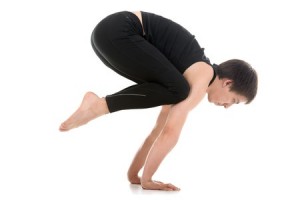People have practiced yoga since 2700 BC. But yoga didn’t come to the U.S. until 1893. Nowadays, many Americans practice yoga. Some common yoga styles include Hatha, Anusara, Bikram, Vinyasa, Ashtanga, Iyengar, Flow and Kripalu.
Yoga and Common Injuries
Yoga can help improve your strength, flexibility, balance and well-being. However, like any form of exercise, you may be at risk for injuries to the lower extremities, such as the lower back, hip, knee and hamstring.
Common Reasons for Yoga-related Injuries
Some reasons why you may become injured include:
- The instructor pushes you to perform a pose beyond your ability.
- Your instructor makes a hands-on adjustment to a pose you’re performing that’s beyond the physical limits of your body.
- The instructor may not have enough yoga training, which leads to improper instruction.
- Your class size may be too large for your instructor. Therefor, they can’t provide adequate supervision of each person’s performance.
- The instructor may encourage competition between students or within yourself. You may push yourself too far or too fast for your abilities.
- You perform the same poses repeatedly over time. Over-repetition can lead to strain and musculoskeletal injuries.
- You push yourself to reach full extensions in poses before your body is ready to perform the extension.
How to Protect Yourself from Yoga-related Injuries
Some ways you can prevent yoga-related injuries are:
- Perform warm-up stretches before your workout.
- Receive proper instruction before trying yoga on your own to ensure you’re performing poses correctly.
- Before taking a class, ask if the instructor is knowledgeable in injury prevention.
- Listen to your body. Don’t push yourself beyond your abilities.
- Be aware of your muscle strength and endurance levels before trying more advanced poses.
- Know your range of motion limits before pushing your body into a pose.
- Use blocks, bolsters, folded blankets and straps to modify poses, if needed, until you can perform the pose unaided. For pose variations, modifications, contraindications, and other information, refer to the Yoga Journal.
- Be aware that yoga in a hot environment can lead to poor judgment that causes you to push yourself too far into a pose, which can lead to musculoskeletal injuries.
- Realize that flow yoga may predispose you to injuries. When you move quickly from pose to pose without achieving proper body alignment, you may injure yourself.
- Understand that increasing the frequency of your yoga workouts or your intensity level too rapidly can lead to a higher risk of injuries.
By being cognizant of the injury risks associated with yoga, you can take steps to ensure you stay safe and injury free.
Experience Realignment from Your Feet Up
If you suffer from foot, leg, hip or lower back pain, ezWalker® Custom Fit Orthotics can provide you with pain relief and comfort throughout your body. These custom orthotics are bio-mechanically designed to properly support the medial longitudinal, lateral longitudinal, and transverse or metatarsal arches of your feet by redistributing your body weight evenly over both feet and bringing your whole body into correct alignment. Just as you strive to achieve the proper position in yoga, ezWalker® Custom Orthotics will guide your feet from lateral heel to medial forefoot – the correct motion of the gait cycle. Since your feet will function in a more optimally controlled position, the stress on your feet, legs, hips and lower back will be reduced.
For more information on our custom orthotics, visit the WalkEZStore.com. Or, order your ezWalker® Custom Fit Orthotics today to create a better step with every step you take.
Because … when your feet feel good, you feel good.®
Disclaimer: The information included in this article is for educational purposes only. It should not be used as a substitute for professional medical advice, diagnosis or treatment.



